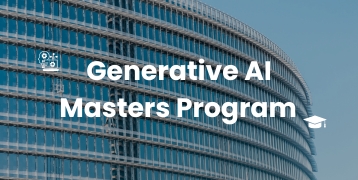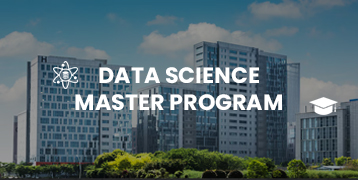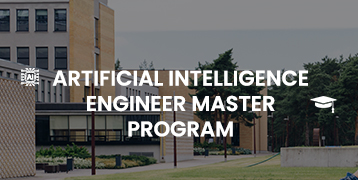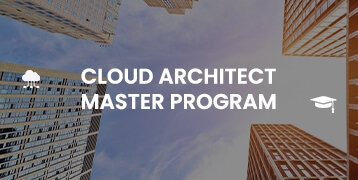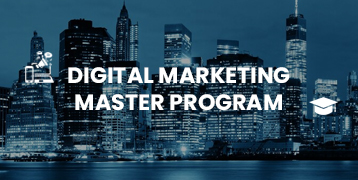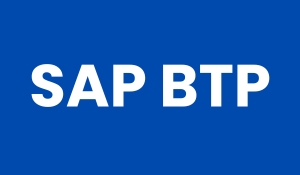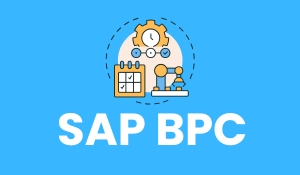
Introduction SAP BRIM
SAP BRIM (Billing and Revenue Innovation Management) is a full suite of tools designed to help businesses address complicated, subscription-driven, usage-based, or high-level billing scenarios from the quote-to-cash lifecycle perspective. It allows businesses to optimize and automate key revenue streams, customer interactions, billing, and collections that are niche in telecommunications utilities, media, and high tech.
By combining SAP Subscription Billing, SAP Convergent Charging, SAP Convergent Invoicing, and FI-CA, SAP BRIM allows companies to have a uniform approach to billing and revenue on an end-to-end basis. Organizations can be able to handle dynamic pricing, bill in real-time, and provide flexible subscription structures with BRIM and can also generate detailed bills while upholding customers’ satisfaction and financial policies.
Using SAP BRIM Training provides companies with the ability to reduce revenue loss, accelerate new offerings, and optimize operational growth. Companies that are considering either digital or service-based business models can use the agility and customer-centric billing power of SAP BRIM to further enhance their competitive advantage.

Beginner Level (1–2 Years Experience)
What is SAP BRIM?
SAP BRIM offers a complete solution for billing and revenue management throughout the entire process, from subscription management to invoicing and finally to revenue recognition.
What are the key components of SAP BRIM?
The key elements of SAP BRIM include Subscription Order Management (SOM), Convergent Charging (SAP CC), Convergent Invoicing (SAP CI), and Contract Accounting (FI. In collaboration, they guarantee smooth processes of handling and generating subscription and revenue information.
How does Subscription Order Management (SOM) function in BRIM?
SOM (Subscription Order Management) handles subscriptions from order collection through to contract execution. Also, this feature enables product combinations and service configurations to enable a seamless customer onboarding process.
What is the role of SAP Convergent Charging (SAP CC)?
SAP Convergent Charging (SAP CC) enables real-time service handling since it can assess and bill activities as they are performed in real time. The solution enables complex pricing configurations, yet it provides reliable and efficient charge calculations for many transactions.
Explain the purpose of Convergent Invoicing (SAP CI)?
SAP CI combines the invoicing data of various systems to generate a single invoice document. Therefore, SAP CI increases efficiency in billing and increases transparency to customers.
What functionalities does FI-CA provide?
FI-CA (Contract Accounts Receivable and Payable) manages the financial side of customers and provides such features as issuing invoices, processing received payments and debt collection. Besides, it facilitates dunning management, refunds, and reconciliation of customers’ accounts.
How does SAP BRIM support different pricing models?
Using SAP BRIM, enterprises are capable of managing various charge types including one-time payments, recurrent fees, and charges based on usage. The capacity of the system to handle tiered and volume-based pricing implies that SAP BRIM is a one-stop solution when faced with a complex billing situation.
Can SAP BRIM integrate with other SAP modules?
The SAP BRIM is easily integrated with other SAP modules such as SAP S/4HANA, SAP CRM, and SAP FI. Therefore, SAP BRIM enables the automation of workflows from the beginning of billing to finance and customer service implementation.
What industries commonly use SAP BRIM?
SAP BRIM is widely used by telecommunications, utility, media, and high-tech companies. The solution fits well for businesses that use subscription, usage-based, or advanced billing strategies.
How does SAP BRIM enhance customer experience?
Customers on SAP BRIM are in a position to select their billing methods, track their usage in real time, and make all payments through a central system. Billing is simple and understandable for clients and the possibility to personalize and manage one’s account with ease.
Intermediate Level (3–5 Years Experience)
Describe the end-to-end process flow in SAP BRIM?
Following the initiation with product configuration, the subsequent steps include order management, recording service usage, assigning charges, generating invoices, and finally, financial settlement.
How are charge plans configured in SAP CC?
Charge plans define the costs that are used when billing, by including rates, discounts and allowances as part of the usage data analysis.
What is the significance of BITs in SAP CI?
Billing Items (BITs) are individual chargeable events that are bundled into invoices.
Explain the integration between SAP CC and SAP CI?
SAP Convergent Charging (SAP CC) calculates the cost of usage as it occurs in real time. The billing and invoice generation activities are handled by SAP Convergent Invoicing, after the charges have been computed by SAP Convergent Charging.
How does SAP BRIM handle revenue recognition?
Revenue Accounting and Reporting (RAR) module in SAP BRIM is responsible for the revenue recognition. It assists in ensuring compliance with accounting standards such as IFRS 15 and ASC 606.
What is the role of master agreements in BRIM?
Master agreements define the overarching terms and conditions for customer contracts and subscriptions.
How are disputes managed in FI-CA?
In FI-CA, a special dispute management module is used to monitor and manage any customer billing dispute. It facilitates rapid communication, orderly case resolution, and a smooth flow of information with financial systems.
What are the benefits of using Convergent Invoicing?
Convergent Invoicing simplifies billing efforts as charges are consolidated into one document. This results in better billing, fewer miscalculations and improved customer knowledge and satisfaction.
How does SAP BRIM support digital transformation?
SAP BRIM facilitates digital transformation by being the enabler for customizable, automated billing frameworks supporting services billed on subscription or usage. It offers actionable insights, customized customer journeys and streamlined administration of finance thus improving operational effectiveness and business innovation advancement.
What challenges might arise during SAP BRIM implementation?
The SAP BRIM implementation process can be complicated by such matters as the smooth integration of several systems, transferring huge amounts of data efficiently, and making sure that current business operations are compatible with the new solution. Moreover, the organization may find it difficult to implement changes and win acceptance from all users.
🔴 Advanced Level (6+ Years Experience)
How do you approach designing a new BIT class in SAP CI?
The process of deploying SAP BRIM could be complicated with intricate integrations, problems migrating data, and complicated harmonizing of business processes with a new solution. Moreover, in many cases, preparing the users for the transition and promoting a positive attitude towards adoption can also become their obstacle.
Explain the credit card settlement process in BRIM?
The process covers the collection of payment details, transfer through payment gateways and update of records within the FI-CA system.
How is real-time charging achieved in SAP CC?
Real-time charging in SAP CC works by processing live usage data very fast and using pre-determined rules for charging to create immediate charges. Using this method, telecom or utilities services can be billed accurately and promptly.
What strategies ensure billing accuracy in high-volume scenarios?
Relying on such automated validation, immediate error identification and systematic reconciliation procedures ensures billing accuracy at times of high-volume transactions. Regular audit and constant tracking are key elements in the protection of data quality and the reduction of inconsistencies.
Describe the integration of SAP BRIM with external systems.
SAP BRIM has APIs, middleware, and web services for interfacing with other systems for smooth data transfer for billing, invoicing, and customer management. It provides real-time synchronization with CRM, ERP and payment gateways for easy revenue management.
How do you handle complex discounting scenarios in SAP CC?
Complex discounting scenarios in SAP Convergent Charging (SAP CC) are addressed by the use of charge plans, provider contracts, and advanced logic in price plans. The tiered, volume-based, time-based and conditional discounts can be defined using mapping tables, chargeable item classes and customizable discount logic through the Java-based user extensions, if necessary.
What is the process for managing subscription renewals in SOM?
SOM automates the notifications for renewal and extension of contracts and implements modified pricing or terms.
How does SAP BRIM support compliance with global tax regulations?
SAP BRIM enables compliance with global tax regulations with the help of integration with SAP Tax Compliance as well as external tax engines, such as Vertex or Avalara. It automates tax computation, reporting, and validation of taxes in multiple jurisdictions and types of taxes.
Explain the role of mediation in SAP BRIM.
Mediations within the framework of SAP BRIM play a very crucial role in gathering, changing, and compiling the usage data from different sources in the networks into the standard form. Through this processed data, it is forwarded to SAP Convergent Charging for rating and billing purposes to achieve efficient and effective capture of revenue.
How do you optimize performance in a BRIM implementation?
By performing system tuning, effective data modelling, as well as using the in-memory processing capabilities of SAP HANA.
Other Subject-related Questions and Answers:
What is the main difference between SAP BRIM and SAP Ariba?
SAP BRIM (Billing and Revenue Innovation Management) is oriented at revenue management, subscription billing, and complex schemes of pricing, which are widespread across telecom, utilities, and digital services. Conversely, SAP Ariba is a cloud solution for procurement that is used for managing the supply chain, sourcing and cooperation between suppliers and customers. BRIM takes care of the quote-to-cash process while Ariba takes care of the procure-to-pay process. They play different ends of the business value chain, but can work together in the enterprise ecosystems.
Can SAP BRIM and SAP Ariba be integrated? If so, how?
Yes, SAP BRIM and SAP Ariba Training is possible to be integrated through SAP CPI or other middleware tools such as SAP PI /PO. For instance, a service-based company that utilises Ariba for supplier contracts and BRIM for customer billing discovers that integration allows synchronization of data between the procurement data and customer billing data. An archetypical example may be feeding contractual procurement terms from Ariba into BRIM for use based or subscription billing.
What are the business benefits of using both SAP BRIM and SAP Ariba together in an enterprise system?
The integration of SAP BRIM and SAP Ariba offers an end-to-end view across procurement and streams of revenue. Ariba is responsible for efficient supplier-side contract and sourcing management, while BRIM manages the customer-side billing and revenue. By integrating, organizations will be able to balance supplier’s costs with customer’s billing for improved profit margin analysis, contract compliance, and an optimum cash flow throughout the organization.
How do SAP BRIM and SAP BPC serve different business functions?
SAP BRIM is oriented towards controlling the process of quote-to-cash, such as subscription billing, convergent invoicing, contract accounting, which is used in high-volume or usage-based billing surroundings.
SAP BPC Training, on the contrary, is utilized for financial planning, budgeting, forecasting, and consolidation. As BRIM is concerned with dealing with transactional data and billing operations, BPC aids in analyzing such financial data to plan strategies and produce reports aimed at compliance.
Can SAP BRIM data be used in SAP BPC for financial planning?
Yes. The produces useful billing, invoicing, and revenue data which can be pulled into SAP BPC for planning and forecasting purposes. Integrating BRIM revenue data in BPC to enhance more accurate financial projection, especially in the case of subscription based revenue models can be achieved by using SAP BW or SAP Data Services.
What are the key integration points between SAP BRIM and SAP BPC?
Key integration points include:
- Revenue data from Convergent Invoicing or FI–CA in BRIM into BPC for planning.
- Customer-level billing and payment history, which allows cash flow forecasting in BPC.
- Prediction using patterns of use gathered during BRIM’s charging and invoicing.
- It is usually performed through SAP BW, CDS views, or APIs, depending on the architecture.

How does SAP BPC help in analyzing revenue from SAP BRIM?
The SAP BPC can aggregate and analyze the billing history in BRIM to:
- Project revenues for the future (usage or subscription-based)
- Design what-ifs related to pricing change or customer churn.
- Prioritizations of financial goals through the actual invoicing performance.
What challenges might arise when integrating SAP BRIM with SAP BPC?
Common challenges include:
- Poor data matching because of volume and granularity mismatch (BRIM is very transactional, BPC is more aggregate)
- Mapping BRIM’s recognition timings of revenue to BPC’s periods.
- Real-time vs batch processing needs
- Making sure that data and reconciliation remain the same in both systems.
- To counter this, well-defined ETL strategies, data modelling, and governance are needed.
How can SAP BTP enhance SAP BRIM capabilities?
SAP BTP extends SAP BRIM in that it supports custom development, integration, analytics, and automation. With the help of such services as SAP Integration Suite, businesses can integrate the BRIM system with other third-party systems. Companies can create subscriptions or customer portals through SAP Extension Suite. Real-time insights from BRIM data to optimise billing, revenue, and customer experience is enabled through SAP HANA Cloud and SAP Analytics Cloud on BTP.
What role does SAP Integration Suite on BTP play in a BRIM landscape?
SAP Integration Suite (which is a part of BTP) plays the role of a middleware tool that connects SAP BRIM to internal and external systems like CRM, payment gateways, or tax engines. It offers pre-built connectors, APIs, and integration flows to synchronise data from SAP CC, CI, and FI-CA to cloud-based services in a seamless manner when an orchestration is required throughout the quote-to-cash process.
Can you give an example of a BRIM extension built on SAP BTP?
A regular one is a bespoke customer self-service portal that is developed with the SAP BTP Training. This portal lets the customers see invoices (from CI), subscriptions (from SOM), or file disputes (connected to FI-CA). Front-end is implemented with SAP Fiori/UI5 and deployed on BTP, but BACKEND POSTURE is the integration of secure BRIM modules with the help of CAP (Cloud Application Programming Model) or APIs.
How do SAP BRIM and SAP MM differ in their functional focus?
SAP BRIM is designed for customer billing, subscription management, and revenue processing, especially in service-based or high-volume industries (like telecom or utilities).
SAP MM, on the other hand, handles procurement and inventory management, focused on materials, vendors, and purchasing processes.
In short, BRIM manages customer-facing revenue processes, while MM manages supplier-facing procurement processes.
Is there a use case for integration between SAP BRIM and SAP MM?
Yes. A common integration scenario occurs in project-based services or utilities, where material procurement (managed via SAP MM) is linked to a service or subscription billing in SAP BRIM. For example, when delivering a physical product as part of a subscription (e.g., a smart meter), the procurement is handled in MM, and the subscription is billed via BRIM. Coordinating both ensures accurate cost and revenue alignment.
How can material data from SAP MM be used in SAP BRIM processes?
Material data from SAP MM Training can be linked to product master data in BRIM (especially in SOM or CC) when offering bundled products that include physical items and services. For instance, a telecom package may include a router (procured via MM) and internet service (billed via BRIM). In such cases, integrating material data ensures consistency in product delivery, billing, and inventory tracking.
What is the main difference between SAP BRIM and SAP SD in the order-to-cash process?
SAP SD manages traditional product sales, pricing, delivery, and billing for physical goods in the order-to-cash (O2C) cycle.
SAP BRIM, in contrast, is optimized for subscription-based, usage-based, and recurring billing, often used in industries like telecom, media, and utilities. While SD handles linear product sales, BRIM is designed for dynamic, service-oriented billing models.
Can SAP BRIM and SAP SD work together in a hybrid billing model?
Yes. In many businesses, SAP BRIM and SAP SD Training are integrated to support hybrid billing models, where a single customer contract may involve both physical goods (handled by SD) and subscription services (handled by BRIM). For example, a customer might purchase hardware via SD and be billed monthly for service via BRIM. Integration ensures a unified customer invoice and consistent revenue tracking.
How is customer master data shared between SAP SD and SAP BRIM?
Customer master data is typically synchronized across both modules using SAP Business Partner functionality (especially in S/4HANA). In BRIM, FI-CA, and SOM use the same Business Partner model as SD. Proper synchronization ensures seamless processing of orders, billing, dunning, and payment across both systems.
What are the key challenges in integrating SAP SD with SAP BRIM?
Key challenges include:
- Aligning pricing and discount logic across SD and Convergent Charging
- Managing invoice consolidation when SD and BRIM generate separate billing documents
- Ensuring data consistency in customer contracts, sales orders, and billing plans
- Handling returns or cancellations across systems in a coordinated manner
- These can be addressed through middleware (like SAP CPI), master data harmonization, and a clear process design.
How does revenue recognition differ between SAP SD and SAP BRIM?
In SAP SD Training, revenue recognition is typically based on the delivery of goods or milestone billing.
In SAP BRIM, it’s often tied to usage, subscription duration, or service consumption, and is managed through SAP Revenue Accounting and Reporting (RAR). BRIM provides granular control over revenue timing and allocation, which is especially important for IFRS 15 or ASC 606 compliance.
Conclusion:
SAP BRIM Training for a professional who wants to succeed in industries that revolve around complicated billing and subscription models. This list of interview questions and answers by GoLogica will help you acquire a deep understanding of such core BRIM components as Convergent Charging, Convergent Invoicing, Contract Accounts Receivable and Payable (FI-CA), and Subscription Order Management. If you are a fresher getting ready for your first role or a seasoned consultant interested in brushing up on the latest trends, this guide offers useful tips to help your preparation and increase your confidence levels and readiness. With the recent digitization and cloud transformation technologies that SAP is embracing, it is most appropriate to be up to date and well prepared for interviews and maximize success in your SAP career. Continue to learn and lead in the fast-changing world of enterprise billing solutions with SAP BRIM.
Related Articles:
SAP SRM Interview Questions
Top SAP Modules List 2025
SAP HANA Administration Interview Questions
SAP GRC Interview Questions

